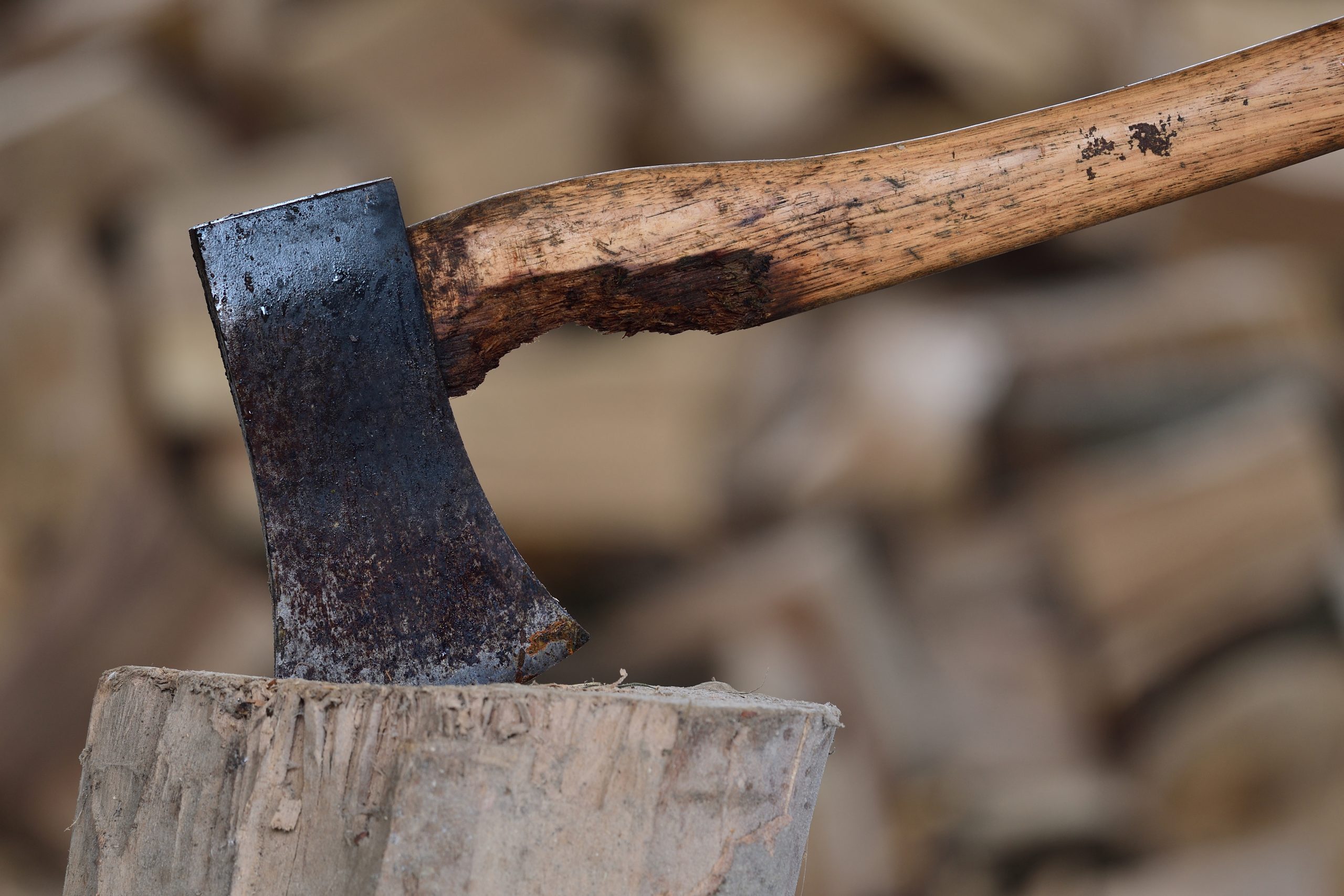
How to Split Firewood the Right Way

Whether you’re heating exclusively with wood or just revving up the occasional blaze in the fireplace, there comes a time when you’ll need to split a few too-large, unwieldy logs, or make use of those cut up stumps your friend just thoughtfully dumped in your backyard.
This may be a chore, but there’s joy to be had in it. Splitting a log in one perfect swing can be as exhilarating as hitting a round-tripper in your baseball league or driving a golf ball far down the fairway. And once you master your form and get in a rhythm, it’s actually a pretty Zenlike activity. Which we could all use right now.
Axes or Mauls?
You don’t want to use a regular ax to split logs. You need a splitting ax, which is purpose-made, or an even heavier maul. Then the question might be, how much wood do you intend to split? Mauls will plow through logs more efficiently, especially knotty and dense wood, but they weigh an average of 6 to 8 pounds and can wear you out quickly. Splitting axes average 3 to 6 pounds and should do fine for most reasonable jobs.
How Tall Are You?
Splitters come in different lengths, and the taller you are the longer handle you’ll want — otherwise you could be putting your shins or toes in jeopardy from overstrikes or off-center hits. If you’re of mid-height, a handle of 28 inches or so should be fine. If taller, consider a 36-inch or so handle.
Speaking of overstrikes, they can play havoc on wooden handles, not to mention stinging your hands, so consider models that have some kind of protective collar on the handle, under the blade.
Play It Safe
Swinging a sharp and heavy object with force should not be done while wearing shorts and flip-flops. Be safe out there, people, and gear up with work gloves, googles, and sturdy footwear. And don’t split with anyone near you, in case of flying chips.
Setting Up
You can split logs just by setting them upright on the ground (especially with a longer-handled tool), but placing them on some sort of chopping block, like an old stump end, is more stable, and will keep you from driving the blade into the ground.
Figure out how far away to stand by taking a stance facing the log. With your hands at the end of your splitting ax or maul, extend your arms so the blade reaches the center of the log.
Now move your dominant hand to the top of the handle under the blade, and you’re ready to roll. Take a few short practice swings before you really let loose and adjust your stance as needed.
Swing Away
Bring the maul straight back over your head, and as you swing it forward, let your dominant hand slide back down the handle. If all goes well, you should hit the log in the center, and the weight of the ax and its momentum will do the rest. If the blade doesn’t split the log with one blow and sticks in the log, you can either wriggle it out and swing again, or just pick the log up with the blade still in it and bring it down on your stump. That usually does the trick.
As with anything, practice will make perfect, but you should quickly find your form and rhythm.
Triple Play
The old saying is that wood warms you three times — when you split it, when you stack it, and when you burn it. Once split-wood ages for about a year, it should be ready to burn. Stacking it? That’s another story.

